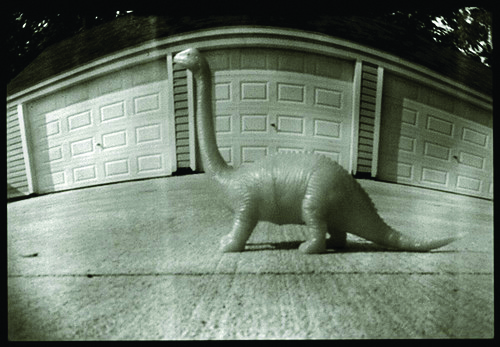Should extinct animals be brought back to life?

Courtesy of Matt Callow on Creative Commons
Today, the real-world discussion of de-extinction is ongoing with several questions of ecology and ethics being raised.
Just over thirty years ago, in 1990, Michael Crichton released the iconic novel, “Jurassic Park.” Three years later, the book was adapted into one of the most successful blockbusters of the decade which then spawned a nearly 30-year-old franchise that continues to this day. At its core, Jurassic Park is about cloning extinct animals and trying to domesticate them in the modern world. These cloned animals are then used for entertainment and commercial benefit while ignoring key issues with de-extinction. Today, the real-world discussion of de-extinction is ongoing with several questions of ecology and ethics being raised about the concept.
Animal cloning in animals goes as far back as the late 1800s when German biologist, Hans Driesch found that separating two cells of an embryo allows them to each grow into their own organism. In 1996, the first animal to be cloned from an adult cell was born. This animal, Dolly the sheep, fueled interest and conversations about cloning and stem cell research. Continuing on the success of Dolly, the same scientists cloned a sheep named Polly with the Factor IX gene implemented into it. The results showed medical benefits for cloning as the new gene allowed for the sheep’s milk to produce proteins that treat hemophilia.
Though no extinct animals have been cloned and brought back into existence, in late 2020, the first clone of an endangered species, the black-footed ferret was born. Using DNA from a ferret that died in the late 1980s, this showed that cloning as a means of conservation is entirely possible and can be used as a method of protecting endangered species.
Despite the great strides and benefits displayed by cloning, there are still concerns about how far is too far. Some argue that, by reintroducing extinct species, they will act as more invasive since they are not accustomed to the current state of the environment and its biodiversity. Additionally, reviving an extinct species isn’t necessary for conservation since there are enough endangered species that already need help and putting so much money into an extinct species would be a waste.
Ethically speaking, reviving an extinct species brings up the question of how will the infant animal be raised without parents of the same species? The Captive Condor Breeding Program showed us that, without parental guidance of the same species, animals born in captivity are more social towards humans and don’t function well when interacting with wild animals of their own species. Another ethical question is why should we revive an extinct species when we could put more effort towards endangered species. I believe that there is no reason, other than simply studying a living specimen, for extinct animals to be brought back given that controlling them both behaviorally and maintaining their population size may prove to be a difficult and daunting task.
While there isn’t a T. Rex terrorizing San Diego right now, nor do I see it happening in the future, the potential for cloning is still just beginning. I for one am very interested in seeing where cloning goes from here and just hope that, to echo the words of Jurassic Park’s Ian Malcolm, we must stop to think if we should rather than if we can.

Sam Elwell is the Managing Editor for The Hawks' Herald who has also served as the Opinions Editor (2021-2022) as well as a staff writer (2020...





